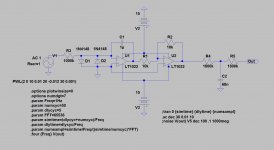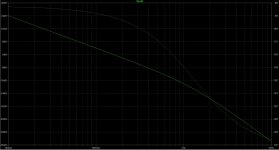Hi,
There are a lot of threads where there is spoken of DC-servo's, but unfortunately non of them (not the ones I found) are mentioning how the AC analysis should look like. So,
Bob Cordell is showing in his book how a poorly designed DC servo looks like (Page 166). I'm asking myself than how the AC analysis of a good DC servo should look like.
My thinking:
1 Enough gain at low frequency (below 1Hz)
2 Gain dropping fast at higher freq (above 1Hz)
3 As close as possible to 90°(integrator) of phase shift at the point where the gain is 0.
4 High impedance at output and input
What are your remarks to the AC analysis below? Is this any good?
Greetz
There are a lot of threads where there is spoken of DC-servo's, but unfortunately non of them (not the ones I found) are mentioning how the AC analysis should look like. So,
Bob Cordell is showing in his book how a poorly designed DC servo looks like (Page 166). I'm asking myself than how the AC analysis of a good DC servo should look like.
My thinking:
1 Enough gain at low frequency (below 1Hz)
2 Gain dropping fast at higher freq (above 1Hz)
3 As close as possible to 90°(integrator) of phase shift at the point where the gain is 0.
4 High impedance at output and input
What are your remarks to the AC analysis below? Is this any good?
Greetz

